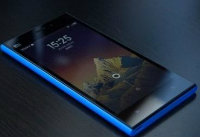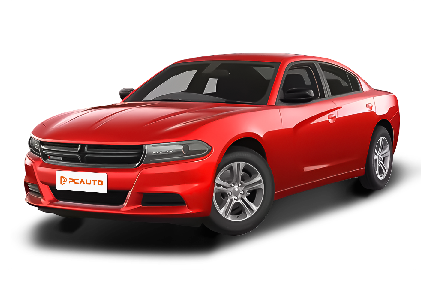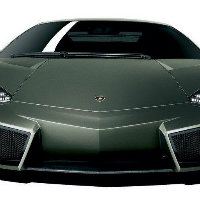Q
What's the weight of Dodge Charger?
The weight of the Dodge Charger varies depending on the trim level and configuration. Generally speaking, its curb weight ranges from around 1,900 kg to 2,200 kg. For example, the base Charger SXT tips the scales at approximately 1,920 kg, while the high-performance Charger Hellcat is closer to 2,260 kg. Exact figures can vary slightly by model year and optional extras, so it's always best to check those details if you're looking at a specific car.
For Malaysian owners or enthusiasts, understanding a car's weight does play a role in daily driving and fuel economy. A heavier chassis typically translates to more stable highway cruising, though it might nudge fuel consumption up a tiny bit. Also, Malaysia's tropical climate and road conditions can have subtle effects on vehicle performance, so keeping up with regular maintenance is a good move to ensure your Charger runs at its best.
As a classic American muscle car, the Dodge Charger has always been a hit thanks to its brute power and head-turning styling. While it's not exactly a mainstream choice on Malaysian roads, it definitely has a dedicated following here. If you're keen to get behind the wheel of one, keep an eye on local dealerships or parallel importers for the latest availability.
Special Disclaimer: This content is published by users and does not represent the views or position of PCauto.
Related Q&A
Q
Is the 2023 Dodge Charger GT fast?
The 2023 Dodge Charger GT performs well in terms of performance. It is equipped with a 3.6-liter V6 naturally aspirated engine, with a maximum output power of 300 horsepower and a peak torque of 264 lb-ft. Paired with an 8-speed automatic transmission, it can accelerate from 0 to 100 km/h in about 6 seconds. This is quite fast for a mid - to large - sized sedan, especially suitable for the urban roads and highway driving needs in Malaysia. Although it's not the fastest model in the Charger series (for example, the Hellcat version has stronger performance), the GT version strikes a good balance between power and fuel economy. Meanwhile, it also offers rear - wheel drive or all - wheel drive options to meet different driving preferences. If you're after stronger performance, you can consider the Charger R/T or Scat Pack versions. They are equipped with V8 engines, providing more power but also consuming more fuel. Given the hot climate in Malaysia, it is recommended to regularly maintain the engine and cooling system to ensure the vehicle stays in good condition in the long run.
Q
Are Dodge Chargers 4-door?
Yes, the Dodge Charger is a classic four - door muscle car. Since its launch in 1966, most models have adopted a four - door design. In particular, all current models (as of 2023) feature a four - door layout, which combines the performance of American muscle cars with family practicality.
For car enthusiasts in Malaysia, although the Dodge brand is relatively niche there, the Charger can still be seen through parallel imports. Its iconic HEMI V8 engine and four - door design not only provide furious acceleration but also make it suitable for family use.
It's worth noting that four - door muscle cars are relatively rare in the Southeast Asian market. These types of vehicles usually focus more on straight - line acceleration performance. Compared with the common Japanese or European four - door sedans in Malaysia, the Charger's wide - body design and rear - wheel drive layout require drivers to adapt to the local rainy - climate driving habits.
In addition, Dodge announced in 2023 that the Charger will be transformed into a pure - electric vehicle. Future versions may continue with the four - door design, but the power system will be completely overhauled. This might be an interesting option for Malaysian consumers who are concerned about environmental trends.
Q
Are Dodge Chargers RWD or FWD?
The Dodge Charger is a classic American muscle car, primarily featuring rear-wheel drive (RWD). This design offers more powerful power output and a more engaging driving experience, making it a great fit for owners who pursue performance. In Malaysia, despite the variable road conditions and climate, rear-wheel-drive cars perform exceptionally well on dry roads. Some high-performance versions are even equipped with an all-wheel-drive (AWD) system to enhance stability on slippery surfaces. The Dodge Charger has never had a front-wheel-drive (FWD) version, which aligns with its muscle car positioning.
For Malaysian consumers considering a rear-wheel-drive model, it's important to pay attention to driving skills on rainy or slippery roads. You should control the throttle properly to avoid skidding. Meanwhile, rear-wheel-drive cars usually have a better front - rear weight distribution, offering more flexibility when cornering. However, their daily maintenance and tire wear might be slightly higher than those of front-wheel-drive cars. It's recommended to choose based on your personal driving habits and needs.
Q
Does the Dodge Charger have a 360 camera?
Yes, some high - end models of the Dodge Charger are indeed equipped with a 360 - degree panoramic camera system. This function provides a panoramic view around the vehicle through a combination of multiple cameras, which is especially useful for users in Malaysia. It allows for easier judgment of surrounding obstacles in narrow streets or crowded parking lots. Currently, the 360 - degree camera is mainly found in the Scat Pack or higher - spec versions of the Charger, but the specific configuration should be based on the configuration list provided by local dealers in Malaysia.
It's worth mentioning that the 360 - degree camera technology was initially used mainly in luxury models and has now gradually become popular in performance cars and family cars. It not only assists in parking but also provides a more comprehensive view at low speeds, reducing the risk of blind spots. Malaysian consumers should also note that these high - tech configurations may need to be optionally installed or bundled with specific packages. It is recommended to visit authorized dealers to personally experience the smoothness of the operation interface and the clarity of the images. At the same time, judge the practicality based on your own driving habits, because American muscle cars like the Charger, which are relatively wide in Malaysia, are in greater need of such auxiliary systems.
Q
Does the Dodge Charger have AWD?
The Dodge Charger does offer an all-wheel drive (AWD) version, but not all models come standard with this feature. It depends on the year and configuration. For example, the Charger GT and Charger R/T models from 2014 to 2021 could be optionally equipped with an AWD system, while high-performance versions like the Charger SRT Hellcat only offer rear-wheel drive (RWD) to maintain light weight and sporty performance. For Malaysian consumers, the AWD system can provide better traction and stability when driving on slippery roads or during the rainy season. However, it should be noted that AWD models may result in higher fuel consumption and maintenance costs.
In addition, as a representative of American muscle cars, the Dodge Charger's large-displacement V6 or V8 engines and classic design are quite niche in the local market. If you're considering a parallel import, you need to confirm whether it meets Malaysia's emission and certification standards. It is also recommended to learn about after-sales support and parts supply through official channels or authorized dealers.
Q
Does a Dodge Charger have horsepower?
Yes, the Dodge Charger does have powerful horsepower. The specific figures depend on the models of different years and configurations. For example, the latest Dodge Charger SRT Hellcat is equipped with a 6.2 - liter supercharged V8 engine, which can output up to 717 horsepower. The higher - performance Charger SRT Hellcat Redeye can even reach 797 horsepower, making it one of the rare high - performance four - door sedans in the Malaysian market. For Malaysian car enthusiasts, the Dodge Charger is not only famous for its classic American muscle car styling but also highly regarded for its powerful performance and unique rear - wheel or four - wheel drive configurations. In Malaysia, although such large - displacement models may face high import taxes and fuel costs, their excellent acceleration performance and unique driving experience still attract many performance - seeking car owners.
In addition, understanding horsepower data is important when choosing a car, but factors such as torque, gearbox tuning, and chassis settings should also be comprehensively considered, as these will all affect the actual driving experience. If you're interested in American muscle cars, you can also pay attention to other similar models like the Ford Mustang or Chevrolet Camaro. They also offer different levels of horsepower configurations to meet various driving needs.
Q
Does the Dodge Charger have traction control?
Yes, the Dodge Charger is indeed equipped with a Traction Control System (TCS). This feature is particularly useful in the driving environment of Malaysia. Especially on wet roads during rainy days or when making an emergency acceleration, the system will automatically monitor wheel slippage and adjust the engine output or apply braking force to ensure the vehicle remains stable. Traction control is an important part of modern automotive safety technology. Many Malaysian consumers will pay special attention to such configurations when purchasing high - performance cars like the Charger, as it can enhance driving safety.
In addition to traction control, the Charger may also be equipped with an Electronic Stability Program (ESC) and multiple driving modes to further meet the needs of different road conditions. In Malaysia's rainy climate and mixed urban road conditions, these systems can effectively reduce the risk of slippage and loss of control. It is recommended that car owners regularly check the system status to ensure normal functionality.
If you have any questions about the specific configuration of the model, you can inquire with the local authorized dealer for the latest specifications, as there may be slight differences in technical details among Chargers of different years or versions.
Q
Do Dodge Chargers have lane assist?
Some models of the Dodge Charger are indeed equipped with the Lane Assist system. For example, in high - end versions like the Charger GT or R/T Scat Pack, an advanced driver assistance package is usually installed, which includes Lane Keep Assist and Lane Departure Warning functions. These systems use cameras to monitor lane markings. When the vehicle unintentionally drifts out of the lane, they provide steering wheel correction or vibration alerts. They are especially suitable for long - distance driving or on highways in Malaysia.
It should be noted that the lane assistance functions may vary among models of different years and configurations. It is recommended to carefully check the configuration list of the specific model or consult the local dealer before purchasing a car. For Malaysian consumers, this kind of driver assistance technology can effectively improve driving safety, especially in areas with frequent rain and fog. However, drivers still need to stay focused because the system is only an auxiliary tool and cannot completely replace manual operation.
If you're interested in this kind of technology, you can also learn about similar functions in models of other brands such as Toyota and Honda. They are usually named "Toyota Safety Sense" or "Honda Sensing". The principles are similar, but the operation details are slightly different.
Q
What is the safety rating of the Dodge Charger?
The safety ratings of the Dodge Charger vary depending on the specific year and configuration. The latest models have performed well in the tests conducted by the National Highway Traffic Safety Administration (NHTSA) and the Insurance Institute for Highway Safety (IIHS) in the United States. For example, the 2023 Charger received a five - star overall rating from the NHTSA, and the IIHS gave it a "Good" rating in many of its crash tests, especially excelling in the frontal offset crash and side - impact tests.
For Malaysian consumers, although there is no local official agency conducting similar tests, the Charger's US - spec safety features such as the multi - airbag system, electronic stability control, blind - spot monitoring, and automatic emergency braking can still provide a high level of safety for drivers.
It's worth noting that safety ratings are not the only thing to consider. The road conditions during actual driving, the vehicle's maintenance status, and driving habits are also equally important. It is recommended that Malaysian car owners consider their own needs when purchasing a car and also pay attention to the vehicle's active safety features, such as adaptive cruise control and lane - keeping assist. These technologies can further enhance driving safety, which is especially useful on Malaysia's complex urban and highway roads.
Q
Is a Dodge Charger a drag car?
The Dodge Charger is indeed a model often used in drag racing. Especially its high - performance versions like the Charger SRT Hellcat, with its powerful HEMI V8 supercharged engine (capable of outputting over 700 horsepower) and an optimized rear - wheel drive system, have become a popular choice for drag racing. However, in essence, it's a high - performance muscle car that balances daily driving and track performance. It's not a pure competition vehicle specifically designed for drag racing (such as a dragster).
In Malaysia, due to the right - hand drive market restrictions, the Charger hasn't been officially introduced. But a small number of left - hand drive vehicles imported through parallel channels may appear on private tracks or in the modification circle. Local enthusiasts need to pay attention to the legal issues. If you're interested in drag racing, locally modified Japanese cars (such as the Mitsubishi Evolution or Nissan GT - R) are more common in Malaysia because there's better support for parts and tuning.
Although the Dodge Charger has high modification potential, one needs to consider the local maintenance network and fuel compatibility. It's recommended to conduct in - depth research before investing in modifications.
Popular Cars
Model Year
Car Compare
Car Photo
Latest Q&A
Q
Is diesel #2 the same as diesel?
Diesel #2 is a specific type of diesel fuel; not all diesel fuels are equivalent to Diesel #2. Diesel #2 typically refers to ultra-low sulfur diesel without additives, whose hydrocarbon properties meet the requirements of relevant standard tests. It has good combustibility, high energy density, and good fluidity at room temperature, making it suitable for diesel engines in heavy-duty vehicles, industrial equipment, and generator sets. Due to its low sulfur content, this type of diesel helps reduce engine wear and exhaust emissions. It is one of the common types of diesel fuel locally and is widely used in diesel-powered equipment in road transportation, agriculture, construction, and other fields.
Q
Is #2 fuel oil flammable or combustible?
Fuel oil #2 is a combustible liquid. Fuel oil (also known as heavy oil or residual oil) is a dark brown, viscous combustible liquid, mainly composed of hydrocarbons, with a small amount of sulfur and trace inorganic compounds. The key indicator for determining whether a substance is flammable or combustible is the flash point: substances with a flash point below 45°C are flammable, while those above 45°C are combustible. Fuel oil has a relatively high flash point, so it is classified as a combustible liquid. It can burn under specific conditions (such as high-temperature environments, contact with ignition sources, etc.), but it is not as easily ignited as flammable substances. It has high viscosity and contains a large amount of non-hydrocarbon compounds, gums, and asphaltenes. It was once used as fuel for large steam turbine boilers and medium-to-large ship engines, and now it can also be used as startup and ignition fuel for large coal-fired boilers.
Q
What is the difference between #2 fuel oil and kerosene?
#2 fuel oil and kerosene are both petroleum-derived distillates but differ in key aspects relevant to their uses in local contexts. First, their distillation ranges: kerosene boils at 150–275°C, making it a lighter fraction, while #2 fuel oil (a heavier distillate) has a higher boiling range of 200–350°C, resulting in thicker viscosity and slower flow at room temperature. In Malaysia, kerosene is used for specific purposes like aviation fuel (jet A-1 for aircraft) and, in some rural areas, traditional lamps or small cooking stoves, though its domestic use has declined with modern energy access. On the other hand, #2 fuel oil is primarily an industrial fuel, powering boilers in factories, heavy machinery, and backup generators due to its higher energy density and stability at elevated temperatures. Their flash points also differ: kerosene has a flash point around 38°C, suitable for safe storage in domestic or aviation settings, while #2 fuel oil’s higher flash point (around 52°C or more) enhances safety for industrial storage and use. Sulfur content regulations apply to both; aviation kerosene adheres to strict low-sulfur standards, while industrial-grade #2 fuel oil typically has higher sulfur levels aligned with local industrial emission guidelines. These differences ensure each fuel is optimized for its intended applications in the country’s energy landscape.
Q
Why put 2 stroke oil in diesel?
The practice of adding two-stroke engine oil to diesel fuel is mainly applicable to two-stroke diesel engines. Due to their compact structure and lack of an independent lubrication system, these engines require two-stroke engine oil to be mixed with diesel fuel in a specific ratio. This allows the oil to lubricate internal moving parts such as pistons and crankshafts while participating in combustion, preventing wear under high-temperature and high-speed operation, as well as assisting in cooling, sealing, and cleaning the engine interior. However, for four-stroke diesel engines, adding two-stroke engine oil to diesel fuel is not recommended. Since they have an independent circulating lubrication system where the oil does not participate in combustion, adding two-stroke oil can easily cause carbon deposits, clog fuel injectors or high-pressure fuel rails, and affect engine performance. It should be noted that the use of two-stroke engine oil must strictly follow the manufacturer's recommended ratio to ensure the normal operation of the engine and extend its service life.
Q
Why is #2 fuel oil red?
Fuel Oil No. 2 (locally often referring to diesel for specific purposes) appears red due to the addition of compliant red dye, primarily intended to distinguish its usage and tax attributes. Locally, red diesel generally falls into the category of tax-exempt or subsidized fuel, designated exclusively for agricultural machinery, fishing vessels, industrial generators, off-road engineering vehicles, etc. In contrast, diesel used by ordinary road vehicles is typically light yellow and subject to full taxation. The addition of dye enables law enforcement agencies to easily identify and monitor the fuel, preventing tax-exempt fuel from being illegally used in road vehicles to evade taxes. This dye is compositionally safe and does not negatively impact the fuel's combustion efficiency or equipment performance. Furthermore, color-coded fuel labeling is a common practice in the local fuel management system. In addition to red diesel, other colors are used to distinguish fuels of different grades or purposes, aiding users and regulators in quick identification. This ensures compliance with relevant regulatory requirements, maintains a fair taxation system, and upholds standardized fuel market practices.
View More

















Pros
Cons